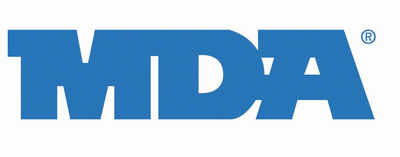Today is the 67th commemoration of the Allied invasion of the Normandy beaches on 6 June 1944. I've written before about these events. You can click here to see last year's post, where you'll also find links to my posts in 2009 and 2008.
Of course, we know that World War II was a global conflict. I've chosen in the past to focus mainly on American accomplishments during the invasion. Today I'd like to share a little of the story of the British 6th Airborne Division and Operation Deadstick.
The Benouville and Ranville bridges over the Caen Canal and the Orne river were critical to the Allied effort on D-Day. The Germans could use the bridges to flood troops and tanks down to the coast to help repel the invading Allies and effectively cut off all Airborne troops landed as part of the invasion. The Allies needed the roads to the bridges clear, as well as the bridges captured intact, to expand the invasion inland, and to reinforce and relieve those Airborne elements.
Failure to link up the forces from the beach with the Airborne units would leave massive gaps in the Allied lines, which would most certainly be filled by enemy troops and tanks.
 |
| Major John Howard |
Led by
Major John Howard (1912-1999), B and D Companies of 2nd Battalion,
Oxfordshire and Buckinghamshire Light Infantry and a platoon of B Company of the
Royal Engineers, loaded into six Horsa Gliders flown by men of the
Glider Pilot Regiment. Five gliders landed on schedule shortly after midnight on 6 June 1944, and the Ox and Bucks attacked the bridges. The other glider landed some 7 miles off target.
After a pitched 10 minute battle, Major Howard's paratroopers overwhelmed the German defenders and captured the bridges. The next job was to hold the position against enemy attack until relief could make it to the bridges from the beaches. The British fended off a counterattack by the
German 21st Panzer Division, as well a several other attacks throughout the night.
 |
| Lt Col RG Pine-Coffin |
The wayward troops from the glider that landed so far off target managed to make their way through German lines and link up with the rest of the 6th Airborne forces, where they proved crucial in defending against enemy counterattacks. Also, the position had been reinforced by elements of the
British 7th Parachute Battalion led by
Lt Col Richard Geoffrey Pine-Coffin (1908-1974).
 |
| Lord Lovat |
Major Howard's Ox and Bucks defended the bridges in company with the 7th PB until about 13:00 (1pm) on D-Day, when elements of the
1st Special Service Brigade, British commandos led by Brigadier Simon Christopher Joseph Fraser, 15th
Lord Lovat (1911-1995), arrived from Sword Beach to relieve the paratroops. Lovat took his commandos across the bridge toward the village of Ranville on the east side of the Orne River, where they set up defensive positions.
Of all the paratrooper activity on D-Day, the attack on the bridges was the most precise and effective engagement. The gliders landed where they were supposed to and on time, rather than scattered like so many of the other units that missed drop zones entirely. Casualties included 20 dead and 36 wounded.
 |
| British Horsa Glider |
In 1944, the bridges over the canal and the river were renamed Pegasus Bridge in honor of British 6th Airborne, from the winged horse on the unit flash, and Horsa Bridge, in honor of the gliders and pilots.
Stephen E Ambrose wrote an outstanding account of the attack in his book,
Pegasus Bridge: June 6, 1944, published by Simon & Schuster in 1988.
British 6th Airborne
"The Red Devils"
"Go To It"























Thank you for talking about Britain's part in this day. That was something I wasn't familiar with.
if you ever get a chance, go see the D-Day memorial. It is so moving.
Have a great week, Travis!